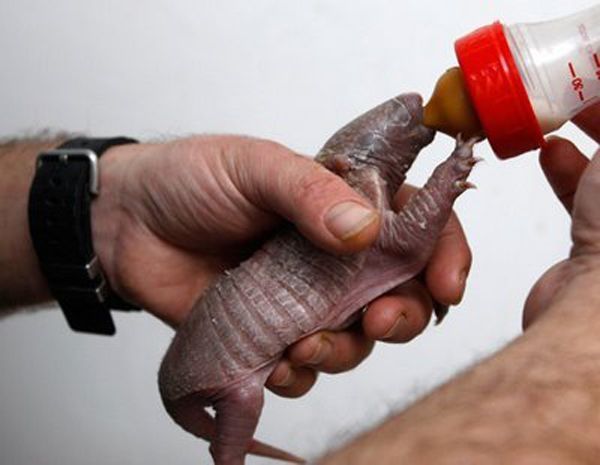|
|
Baby Armadillo
|
Armadillos and humans
• In science
Armadillos are often used in the study of leprosy, since they, along with mangabey monkeys, rabbits and mice (on their footpads), are among the few known non-human animal species that can contract the disease systemically. They are particularly susceptible due to their unusually low body temperature, which is hospitable to the leprosy bacterium, Mycobacterium leprae. (The leprosy bacterium is difficult to culture and armadillos have a body temperature of 34 °C, similar to human skin.) Humans can acquire a leprosy infection from armadillos by handling them or consuming armadillo meat, and are a presumed vector and natural reservoir for the disease in Texas and Louisiana. Prior to the arrival of Europeans in the late 15th century, leprosy was unknown in the New World. Given that armadillos are native to the New World, at some point they acquired the disease from humans.
The Nine-banded Armadillo also serves science through its unusual reproductive system, in which four genetically identical quadruplets are born in each litter. Because they are always genetically identical, the group of four young provides a good subject for scientific, behavioral or medical tests that need consistent biological and genetic makeup in the test subjects. This is the only reliable manifestation of polyembryony in the class mammalia, and only exists within the genus Dasypus and not in all armadillos, as is commonly believed. Other species which display this trait include parasitoid wasps, certain flatworms and various aquatic invertebrates.
|
|









